The Scientist’s Search for the Soul
By Simon Ralli Robinson

The Scientist’s Search for the Soul
By Simon Ralli Robinson

The Relative and the Absolute: Newton and Leibniz
In 1687, Isaac Newton first published ‘Principia Mathematic’ considered to be one of the most important works in the history of science. Having developed a conceptual frame of the universe as one great machine governed by exact mechanical laws, Newton’s calculus enabled scientists for the first time to calculate the exact speed of accelerating bodies at a given time. (1) For Newton, the world consisted of atoms and fields, the primary building blocks of the universe, a universe of solid matter of independent parts, independent too of observers, waiting to be explored empirically and through measurement.
In contrast to Newton, at the same time Leibniz published his treatise “The Monadology” in which he proposed that reality consists of monads, which are the primary architecture of reality, and not matter. Leibniz was critical of Newton’s concept of an absolute time and space, and in many ways could be seen as developing an early theory of general relativity, although his theory never reached the point of being proven.
“Because of the infinite multitude of simple substances, there are, as it were, just as many different universes, which are, nevertheless, only perspectives on a single one.” (2)
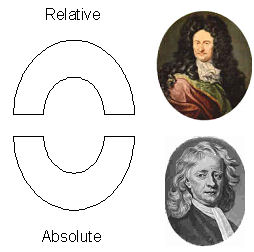
Figure 1: The Monads in relationship to Matter
The unreconciled philosophies of Leibniz and Newton can be modeled in Figure 1, showing Leibniz’s philosophy where wholeness and the relationships between the parts is primary, and Newton’s philosophy where the parts, or matter is primary. Leibniz was caricatured by Voltaire, and today is criticised as being not properly thought out, although many of the individual ideas would persist and inspire future philosophers. (3) McKenna for example, saw the monads as a precursor to modern theories of a holographic universe. (4)
Goethe’s Scientific Revolution
In the following century, the mechanistic view became the predominant scientific paradigm, leading to the industrial revolution. But at the same time, perhaps in reaction to the soulessness of the science, the romantic movement in culture blossomed with the leading lights of Schiller and Goethe. Goethe though famous for his poetry and literature, saw his scientific endeavours as his greatest achievement, culminating in his works on optics which he saw as his most important work. (5) At the age of sixteen Goethe went to university in Leipzig to study law, which bored him. Goethe read philosophy, but wrote that the scholasticized versions of Leibniz and Wolff “simply refused to become clear to me.” (6) Early on Goethe had been much more influenced by the monotheistic philosophy of Spinoza.
Goethe, like Leibniz before him, took a holistic approach to the study of phenomena as can be seen in his studies on physiology:
“All that is wanting for a more rapid development of physiology as a whole, is that one never lose sight of the interaction of all the parts of a living body; for it is only by means of the concept that all the parts of an organic body work upon one part and that each part exerts its influence upon all in turn.” (7)
So we can now see how, in Figure 2, Goethe was able, through a complementary scientific protocol, further develop the holistic aspect of scientific methodology.
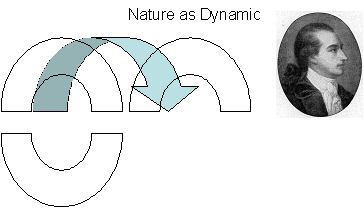
Figure 2: Goethe’s Wholeness in Nature
Goethe was not satisfied with traditional science as he could not see how it enabled a true encounter with wholeness. Whatever static concepts were given to capturing life were not true, because life is something in motion. That understanding came through experiencing the whole as a motion of the wholeness behind the static. Once that wholeness had been encountered, then it was possible to ask the question “how can we now make use of this?” The following quotes by Goethe capture some of this thinking: (8)
“Don’t look for anything behind the phenomena; they themselves are the theory.”
“The greatest achievement would be to understand that everything factual is already its own theory.”
Quantum Theory
The development of quantum physics in the early part of the twentieth century would come to overturn the very bedrock of Newton’s mechanistic world view, something Goethe had not achieved. While introducing many perplexing issues when attempting to explain the fundamental building blocks of the universe, some scientists were perceiving some form of wholeness within the ambiguities and contradictions of the various quantum theories. (9)
• Were sub-atomic particles now to be explained as waves or particles?
• How could particles influence the behaviour of other particles when not physically connected through space? (non-locality)
• Why does movement appear to be discontinuous where for example electrons can go from one state to another without passing through other states in between? (quantum jump)
• How can we achieve an objective theory of the universe, when the observer of an experiment appears to affect the outcome of the experiment?
• Neither momentum and the position of a particle could be measured simultaneously. (Heisenberg's Uncertainty principle)
Moreover, there was no single interpretation of quantum physics, and this was the subject of much debate.
"The main thrust of the Copenhagen Interpretation, which is the interpretation of quantum theory accepted by the bulk of the scientific community, is that the proper goal of science is to provide a mathematical framework for organising and expanding our experiences, rather than providing a picture of some reality that could lie behind these experiences. That is, most physicists today side with Bohr, rather than with Einstein, on the question of the utility of seeking a model of reality that can be conceived of as independent of our experience of it.” (10)
Science had progressed in its ability to probe deep into the nature of particles, as shown in Figure 3, but many questions remained unanswered. In his book ‘Cosmos,’ Smolin provides a useful overview of the entirety of Leibniz’s work, including his criticisms of Newton’s absolute and fixed concepts of space and time, compared with Leibniz’s own concepts of space and time arising from the relations between entities, a precursor to Einstein’s general theory of relativity. (11) However, what is noticeable in its absence from Smolin’s attempt to unite quantum theory and relativity through a ‘many observers’ (pluralistic) explanation, is a serious attempt to account for consciousness.
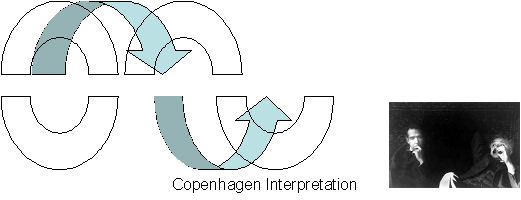
Figure 3: The Paradigm Shift into Quantum Mechanics
The Implicate Order
Like Einstein, David Bohm had been unhappy with the Copenhagen Interpretation, and felt that a fundamental explanation of reality would be possible. Rather than refusing to speculate beyond that which was observed in experiments, Bohm began to develop his theory of the implicate order in the 1960s. He started by turning Newtonian mechanics on its head. Rather than begin with the assumption of an objective cosmos consisting of elementary particles, he saw the fundamental reality being one of constant movement:
“my main concern has been with understanding the nature of reality in general and of consciousness in particular as a coherent whole, which is never static or complete, but which is an unending process of movement and unfoldment.” (12)
Bohm proposed that particles have both a wave aspect and a particle aspect at one and the same time, as opposed to the wave aspect collapsing into its particle aspect at the point of observation which others had proposed. Bohm used the analogy of a ship being guided by radar, in that the wave (or field) aspect of quantum system, such as an electron, influenced the particle aspect. Bohm saw matter being enfolded and unfolded in a higher dimension of reality which he termed the ‘implicate order’. As explained by Pylkkänen, a close collaborator with Bohm:
“We can now say that the single electron can be understood through a total set of fields which are generally not localised in space. At any given moment, one of these waves may have all of the amplitude localised in a single region (and in this sense be unfolded to this region), to produce a particle-like manifestation.” (13)
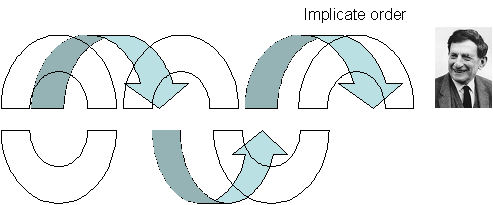
Figure 4: Bohm’s holistic implicate order
So we can now see in Figure 4 above, how Bohm’s framework leads back to a new definition of wholeness, which again like Goethe and Leibniz, provides us with a more holistic framework for science.
Within Bohm’s general framework, we do not lose the mechanistic world entirely, and are now able to understand why classic Newtonian mechanical explanations appear to be valid within a certain limited aspect of reality. The implicate order, although in a continual state of flux, is the more fundamental reality, out of which emerges (or unfolds) the explicate order. The explicate order can be seen as that aspect of reality that we experience, one of consciousness and matter made up of particles which have the appearance of solidity and localised causation.
“What we have here is a kind of universal process of constant creation and annihilation, determined through the super-quantum potential, so as to give rise to a world of form and structure, in which all manifest features are only relatively constant, recurrent and stable aspects of this whole.” (14)
As Pylkannen notes, Bohm’s framework was just that, and had not reached the stage of becoming a fully fledged theory:
“All that has been discussed here opens up the possibility of considering the cosmos as an unbroken whole through an overall implicate order. Of course, this possibility has been studied thus far in only a preliminary way, and a great deal more work is required to clarify and extend the notions.” (15)
Chaos, Self-Organisation and Emergence
While Bohm was developing his general framework, a new mathematics termed ‘chaos theory’ was developing, utilising the newly available number-crunching abilities of computers. This new mathematics showed that seemingly chaotic and complex behaviour could give rise to ordered structures. It also brought to light the fact that some behaviour could not be exactly predicted, which contributed to the shift towards an analysis of qualitative behaviours.
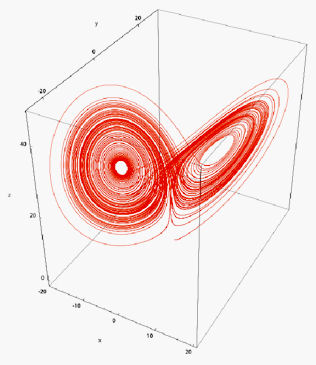
Figure 5: The Lorenz Strange Attractor
As an example, a pendulum under friction will move towards a stationary point in due time. This point is called an attractor. Chaotic non-linear systems behave differently, and the attractors are called ‘strange attractors.’ Since the equations are extremely sensitive to initial conditions, the system may settle around different points within the phase-space, as can be seen by the Lorenz attractor in Figure 4, designed to model convection rolls in the atmosphere.
Kauffman uses Boolean networks to model dynamic systems. He shows how these systems harbour attractors to which the systems settle down. (16) Here the important point to note is that alternative attractors can be interpreted as qualitative behaviours, for example:
• in a genomic regulatory network, interpreted as the alternative cell types in the organism.
• in immune networks, corresponding to different immune states.
• in neural networks, interpreted as alternative memories or categories by which the network ‘knows’ its world.
• in cardiac systems, corresponding to normal and abnormal rhythms.
In parallel, within Biology, it was becoming clear that many phenomena could not be reduced to an explanation of simply the parts within a system. As Capra noted:
“While cell biology made enormous progress in understanding the structures and functions of many of the cell’s subunits, it remained largely ignorant of the coordinating activities that integrate those operations into the functioning of the cell as a whole. The limitations of the reductionist model were shown even more dramatically by the problems of cell development and differentiation.” (17)
Systems theory was being developed, in which the role of feedback was understood to play an integral role. A range of innovative thinkers in science began to incorporate many aspects of systems thinking in order to derive more holistic explanations of the self-organising and self-regulating aspects of many phenomena. Maturana and Varela developed the concept of ‘autopoeisis’ or ‘self-making’ is a network pattern in which the function of each component is to participate in the production or transformation of other components in the network. (18) Prigogine and Stengers complemented the ‘closed’ organizations of autopoeitic structures by described living systems as dissipative structures, open to the flow of energy and matter. Matter and energy flow through them but the structure stays the same. (19) And Lovelock looked at feedback loops at a planetary scale, in his theory of Gaia and the self-regulatory nature of the biosphere. (20)
Figure 5 shows how these new theories in general can be applied at the level of Bohm’s explicate order. Researchers such as Goodwin and Kauffman have pointed out the dangers of retaining a dogmatic reductionist approach, for example in the areas of evolution and genome theory. (21) (22) As Kauffman explains, the entire neo-Darwinian paradigm can be subject to serious criticisms:
• Much of evolution at the molecular level is selectively neutral.
• At the macroeveolutionary level, there are the problems of (i) morphological stasis and punctured equilibrium and (ii) species selection.
“Despite its resilience, that tradition [neo-Darwinism] has surely grown without seriously attempting to integrate the ways in which simple and complex systems may spontaneously exhibit order.” (23)
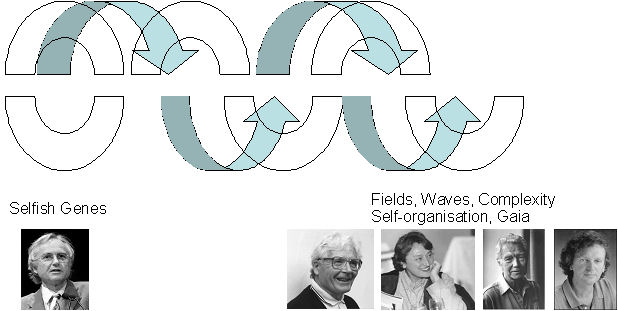
Figure 6: The New Science of Life
It is not just at the physical level, in biology that these new models are making their impact felt. Dynamic Field Theory has been applied in the areas of infant cognition, to provide more complete explanations for infant habituation (24) and infant reaching (25). The models use dynamic field equations, which measure stimulus strength, distance, stimulus time intervals, and coupling between activation and inhibition. They therefore make these interactions explicit and show how the parameters may interact in complex and non-linear ways.
The Hard Problem
I have placed the holistic models of science in the lower semi-circle as for me they are still theories that model the explicate order only. For example, the mathematics of the BZ Reaction are shown to model how wave patterns in slime mould can emerge when food sources are scarce. Lovelock’s Daisyworld computer model was explicitly developed to show how the whole system of both organisms and the environment when coupled together could evolve into a self-regulating system that did not have to resort to panpsychism. (26)
None of the frameworks or theories mentioned so far successfully explain consciousness. For Marvin Minsky, one of the world’s leading artificial intelligence experts, there simply is no issue. Consciousness does not have to be explained:
“as far as I am concerned, the so-called problem of body and mind does not hold any mystery. Minds are simply what brains do.” (27)
In contrast to Minsky, Perus provides a good summary of the various points of view in the debate, and thinks that neural networks alone can not provide an explanation for consciousness:
“with neural networks alone, we are not able to include consciousness into a general theory of mental processes, although associative neural networks realize many of the characteristics which are essential for the processing basis of consciousness. They realize recursive, auto-reflexive information processes. Neuronal patterns interact with each other and with themselves, because their constitutive neurons are constantly interacting. This self-interaction of neuronal patterns is a global process encompassing a web of local interactions, where the individual neurons represent each other's context and content. However, even such self-referential, collective processes seem not to suffice for the unity of consciousness as a global gestalt-process.” (28)
For Pylkkänen, the reason why most researchers fail to solve the issue of how consciousness arises out of matter is that they make the assumption that matter has ontological primacy, and that consciousness somehow arises out of it. In an echo of the monist philosophies of Leibniz and Spinoza, Pylkkänen explains how Bohm’s implicate order framework can be used to understand how both mind and matter, are ultimately, at a higher dimension of reality connected. (29)
“The brain/mind can be thought of in terms of a hierarchy of levels of information. The more subtle levels can be characterized as ‘mental’ and the less subtle ones as ‘physical’.
Bohm went on to develop his framework further, with the concept of active information. Minds were not to be seen as purely non-physical, and matter was not to be seen as completely non-mental. Mind and matter were fundamentally inseparable aspects of an underlying active information. Bohm described the implicate order as consisting of an increasing number of inter-related levels, suggesting a metaphor of more and more closely woven nets.
He was also aware of the implications of his theory, in that perhaps for the first time mind, or even ‘soul’ could be described in quantum mechanical terms. However, the world that we experience, the explicate order, one of solidity and particles, appears to our senses to prevail the most because the quantum potential, or field associated with each electron, is negligible at the large-scale level.
A number of researchers are expanding radically the concept of cognition. Pert has developed the idea that the three classically separated areas of neuroscience, endocrinology and immunology and their various organs, the brain; the glands; and the spleen, bone marrow and lymph nodes are all interconnected in a multidirectional network of communication, linked by information carriers, known as neuropeptides.
“It was becoming clear to us that any receptor on an immune cell would be found on cells in the brain, and that at this molecular level there really was no distinction between the mind and the body.” (30)
Again it should be noted that Bohm did not solve the hard problem of consciousness, but provides a theoretical framework that could be developed further to help us better understand the relationship between mind and matter. Indeed, in suggesting the term ‘holomovement’ to describe the totality of movement of unfoldment and enfoldment, Bohm was explicit in stating that the holomovement could yet include fields currently unknown to us. (31)

Figure 7: The Holomovement
Authentic Wholes
The goal of this essay has been to see if we can achieve a more comprehensive and holistic understanding of reality in the dynamic interchange between the whole and the parts. In following Goethe’s phenomenological approach to science, Bortoft explains how we can gain an intuitive appreciation of what he terms the ‘authentic whole’. (32)
The key to understanding Goethe’s science is to recognise his way of seeing organic life. Bortoft describes this way of seeing as ‘multiplicity in unity’. This can be explained using the example of a hologram. If a hologram is broken up, each separate physical part still retains the original holographic image. Hence multiple instances of a single unit. Plants have the quality of being able to grow a complete new plant from a single leaf. So the ‘whole plant’ was present in a single part of the plant. In this instance, what equates to a division in a hologram is not a physical part of the plant, but the growth of each plant.
As Bortoft points out, this way of seeing is quite different to our common sense way of thinking about the splitting into separate parts of material objects. When we enter into Goethe’s way of seeing, we attempt to ‘visualize’ in our minds the ‘coming-into-being’ of the plant, i.e. the journey the plant makes from its wholeness, which is beyond structure, into structure, into space and time. You see more than just the lifecycle of the plant, you are seeing perhaps the movement from the implicate to the explicate.
Goethe, in being influenced by Spinoza, thought that natural processes have a mental counterpart, and therefore captured at a higher level of cognition:
“Our mind stands in harmony with the deeper lying, simpler powers of nature and so can represent them in a pure way, just as we can perceive the objects of the visible world with a clear eye.” (33)
What Bortoft does so well is to show how we as holistic scientists have to change our mode of perception, to ‘go upstream’ in order to ensure that a phenomenon we are seeking to explain is in fact an authentic whole, and not a counterfeit whole’. This approach works well for example in seeking to understand the inner organic organizations of plants, animals or indeed cells.
Life, The Universe and Everything
We see now that potentially it could well be possible to achieve a holistic concept of life, evolution and our cosmos, and bring together the whole and the parts, as is shown in Figure 8.

Figure 8: Arrival at an Authentic Wholeness
As we went through the wave from the separation of the whole and the parts, to a potential unification, and a holistic conception of reality, at this moment in time there are still many gaps in our understanding. String theory seemed to promise a fundamental and unified theory of everything, but this has not materialised. The genome project nearing its completion has only served to highlight just how possibly incorrect biologists were in placing their faith in the ability of genomes to provide an entire explanation of evolution and morphology.
The new mathematics of complexity and emergence promise to provide much deeper explanations that do take into account the much more complex interactions of parts that act as a whole, rather than mechanically, but perhaps the current limiting factor of these mathematical models is that at present they are modeling that behaviour, albeit qualitative behaviour, of an explicate order only.
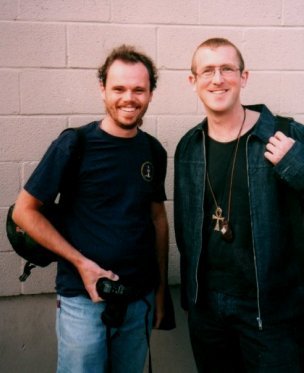
Andy Lloyd and Simon Ralli Robinson
If we look again at the final whole in Figure 7, we now see that there are not two parts fitting together, but a third part appears in the centre. I would propose that this is where we find the soul, the anima mundi perhaps that has been intuited and felt by indigenous cultures for millennia, that made a profound and lasting impression on deep ecologists such as Aldo Leopold, who saw fire in the eyes of a dying wolf that he had shot, and who felt the disapproval of mother nature in his actions, and perhaps is now awakening again in Western cultures as we wake up to the damage that our collective actions are now wrecking on our delicate ecosystem.
By Simon Ralli Robinson, March 2010
Author of "The Yogi Footballer"
References
(1) see for example Capra, F. The Web of Life - A New Synthesis of Mind and Matter Harper Collins (1997) p116
(2) Leibniz, G. The Monadology (1890)
(3) see for example Leibniz’s Philosophy of Mind by Ralph Walker in Gregory, R. The Oxford Companion to the Mind Oxford University Press (1987)
(4) McKenna, T. and McKenna, D. Invisible Landscape Harper Collins (1994) p 52 - 53
(5) Zajonc, A. Goethe’s Theory of Color and Scientific Intuition American Journal of Physics, Vol. 44, No. 4, April 1976
(6) Quote from Goethe taken from Goethe, Dichtung und Wahrheit (pt 2, bk 6) in Samtliche Werke, 16: 271, in Richards, R. The Romantic Conception of Life, University of Chicago Press (2002)
(7) Goethe (1796) div-Gesamtausgabe, vol 37, p101 Munich 1962
(8) “Goethe’s Scientific Revolution” in Richards, R. The Romantic Conception of Life, University of Chicago Press (2002)
(9) for a non-mathematical explanation see for example Zukav, G. The Dancing Wu Li Masters Rider and Co (1991)
(10) Zukav (1991)
(11) Smolin, L. The Life of the Cosmos Phoenix (1998)
(12) Bohm, D. Wholeness and the Implicate Order Routledge, London (1980)
(13) Pylkkänen, P. Mind, Matter and the Implicate Order Springer (2007)
(14) Bohm, D. Hidden Variables and the Implicate Order in Quantum Implications: Essays in Honour of David Bohm ed. by B.J. Hiley and F.D. Peat Routledge, London (1987) p47
(15) ibid p44
(16) Kauffman, S. The Origins of Order Oxford University Press (1993)
(17) Capra, F. The Web of Life - A New Synthesis of Mind and Matter Harper Collins (1997)
(18) Maturana, H. and Varela, F The Tree of Knowledge Shambala (1987)
(19) Prigogine, I. and Stengers, I. Order Out of Chaos Flamingo (1985)
(20) Lovelock, J. Gaia - A New Look at Life on Earth Oxford University Press (2000)
(21) Goodwin, B. How The Leopard Changed Its Spots - The Evolution of Complexity Scribner (1994)
(22) Kauffman, S. The Origins of Order Oxford University Press (1993)
(23) ibid
(24) Schoner, G. and Thelen, E. Using Dynamic Field Theory to Rethink Infant Habituation Psychological Review Vol. 113, No. 2 273-299 (2006)
(25) Thelen, E. and Smith, L. A Dynamic Systems Approach to the Development of Cognition and Action Cambridge, MA: MIT Press (1994)
(26) Lovelock, J. The Revenge of Gaia Penguin (2007)
(27) Minsky, M. The Society of Mind Heinemann, London (1985)
(28) Perus, M. Consciousness: network-dynamical, informational and phenomenal aspects Journal of Dynamical Psychology (1997)
(29) see for example Pylkkänen (2007) chapter 4
(30) Pert, C. Molecules of Emotion Pocket Books (1997)
(31) Pylkkänen (2007) p60
(32) Bortoft, H. The Wholeness of Nature - Goethe’s Way of Science Floris Books (1996)
(33) Goethe Samtliche Werke 4.2:332